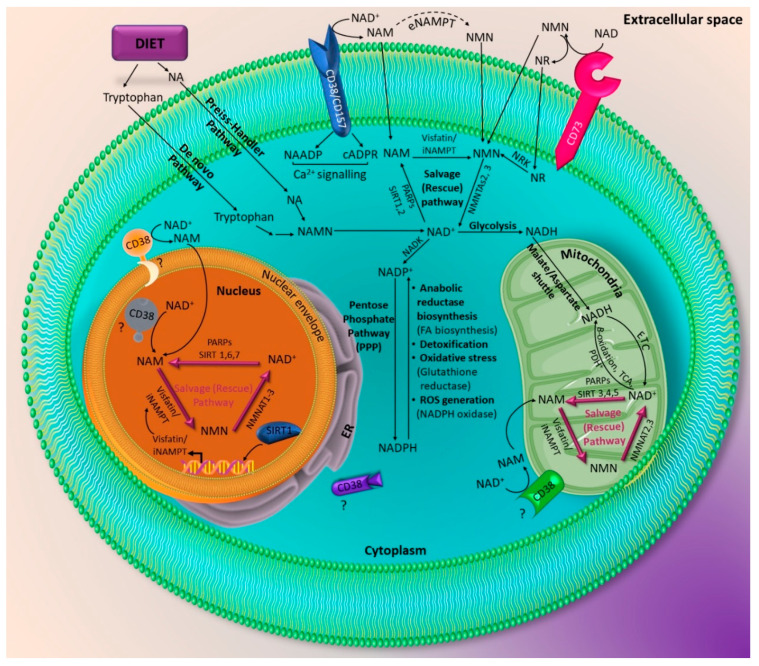Figure 3.
Various physiological roles of intracellular visfatin (iNAMPT). iNAMPT can be located in the cytoplasm, nucleus, and mitochondria. iNAMPT triggers its effects by regulating the levels of the core molecule NAD+. NAD+ levels are maintained through the de novo, Preiss–Handler, and salvage pathways. NAD+ is heavily converted to NAM by several cellular NAD+ dependent enzymes which include SIRT 1, 2 in the cytoplasm, SIRT 1, 6, 7 in the nucleus, and SIRT 3, 4, 5, in the mitochondria and PARPs. NAM will be converted to NMN via iNAMPT which is the rate limiting step in the salvage pathway. NAD+ can be regenerated from NMN via nicotinamide mononucleotide adenylyltransferases (NMNATs). The ectoenzyme CD38 converts NAD+ to NAM to produce NAADP and cADPR involved in intracellular Ca2+ signaling. CD38 can be also present on inner/outer mitochondrial membrane or inner/outer nuclear envelope. NAD+ can be metabolized extracellularly to NMN via the ectoenzyme CD73. NAD+ is a core molecule that plays a role in basic cellular metabolism. NAD+ is a key substrate for glycolysis, the tricarboxylic acid cycle (TCA), pyruvate dehydrogenase (PDH), beta-oxidation yielding NADH. The reduced form NADH can be regenerated via electron transport chain (ETC). NAD+ exist also in a phosphorylated form NADP+. The reduced form NADPH determines the anti-oxidative power of the cell. It is involved in anabolic biosynthesis (fatty acid (FA) biosynthesis), detoxification, cellular responses during oxidative stress via glutathione reductase, and protection against reactive oxygen species (ROS) via NADPH oxidase. NR: nicotinamide riboside.

